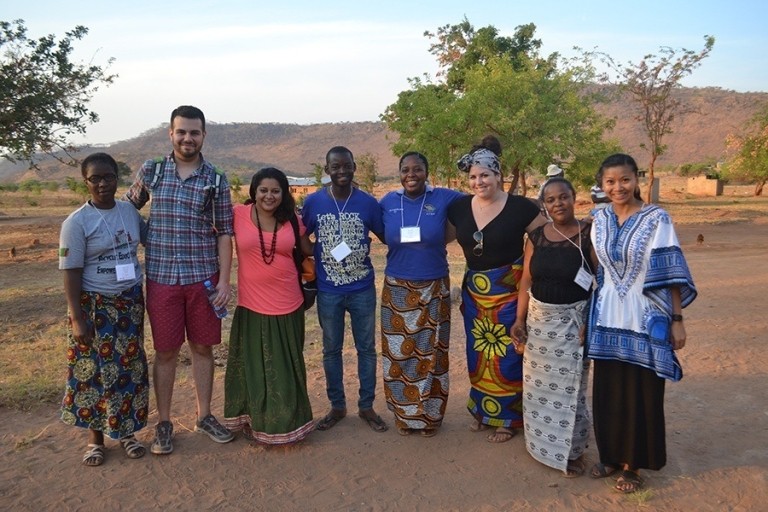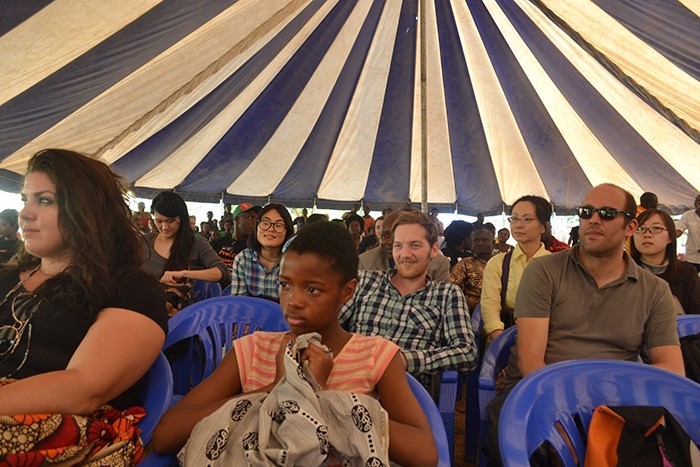Blog
At MIT design summit in Zambia, real design with real people

What if world-leading organizations teamed up to develop and scale technology and business solutions to end global poverty?
This question, currently on the MIT Practical Impact Alliance (PIA) homepage, is one we’re asking ourselves at Pact, too.
At Pact, we believe that an integrated approach to development is essential for solving poverty and marginalization. And we recognize that alone we’ll never solve extreme poverty or truly empower communities. That’s why Pact practices innovation, which includes human-centered design and external and internal knowledge, throughout our organization. One example of how Pact is leading this charge in social innovation is our recent involvement with PIA.
PIA co-design summit
This month, I had the opportunity to spend a week in Zambia at a co-design summit, hosted by Massachusets Institute of Technology D-Lab, PIA member World Vision, and International Development Innovation Network partner National Technology and Business Center (NTBC). Participants included more than 40 representatives of international organizations from the public, private and social sectors, as well as local community members from the village of Naboye and Zambian entrepreneurs and innovators.
The summit was a one-week intensive, intended to give PIA members a chance to practice co-creation with a range of development stakeholders. We worked alongside community members to design solutions to six of their most pressing challenges. I joined the team working to improve educational outcomes. Others worked to create accessible pest management solutions, to address barriers to the adoption of clean water solutions, to improve child nutrition, to build child-friendly latrines, and to gain value from mangos.
Gaining insight
My team started by asking local residents to identify educational challenges. Their answers included student absenteeism, a lack of student engagement and too few teachers.
After two days of mixed-method data collection, we realized solutions didn’t lie within school walls. The issues were far bigger, spanning two villages and impacting every community member.
We learned that for many reasons, parents lack motivation to send their children to school. As a result, children participate in risky behaviors with no repercussions at home or from the community. While some parents enforce school attendance, our data showed that many more do not, because they don’t value education, aren’t financially secure, or engage in negative behaviors themselves.
We found that the prevailing belief is that people should “mind their own business,” and that the actions of one family, parent or child are seen as having no impact on the community at large.

Our approach
Often when designing a service solution, the actual service hasn’t been created yet. That’s what my team encountered. We wondered whether we should look for a solution that could be quickly and easily prototyped, or whether we should start down the unknown path. Hoping for an outcome that would address the fundamental issue at hand – a lack of ownership over children’s wellbeing – we opted for the latter.
While formal leadership structures existed in the community, we believed we could create more community ownership of children through the empowerment of community role models interested in promoting eduction.
Our research showed that informal role models existed, but they acted in isolation, diminishing their impact and leading to disenfranchisement and exhaustion over time.
That brought us to Citzanso – “role model” in the local language. The Citzanso Development Program would be a way to empower and train a diverse team of informal community role models. Intended outcomes included better skills to more effectively advocate for the wellbeing of Naboye’s children, collaboration to build ongoing positive actions and community engagement strategies, and the involvement of formal community leadership in boosting school attendance.
With only one week, there was no way to tell if Citzanso would take off, but that didn’t mean we couldn’t test it. We made a sketch model that helped us identify potential participants we might not otherwise consider. For example, we noticed that a lot of people frequented the local bar. Why not include the bar owner in our program?
When we showcased our model and acted out what the Citzanso program might look like, we received positive feedback from the community, with many people asking us if they could join immediately!
While the prototype was a fun and exciting exercise, the solution’s impact wasn’t the summit’s main objective. Rather, the process was. As a team, we stretched our mutual understanding of how to prototype a service solution and reflected on what it means to design together.
Validation
The personal validation I gained through the summit is the significance of co-design – not just with end-users but all stakeholders. Had our team been comprised only of teachers, and had we not gone through the extensive process of data collection and crowdsourcing ideas from other working groups, we never would have landed on our solution.
The summit was a joint creation of new ideas that fostered integrated approaches to find solutions to six critcal community needs. In fact, as our team focused on improving educational outcomes, we realized that two other working groups solving completely different problems would benefit from Citzanso.
With one more week at the summit, I’m sure all of the groups’ solutions would eventually have melded together for larger impact.
Lucky for me, I am part of this development network, and the lessons I learned in Zambia won’t stay there. When PIA or Pact again asks what it would look like if we all teamed up, I will remind them of the benefits of co-design.